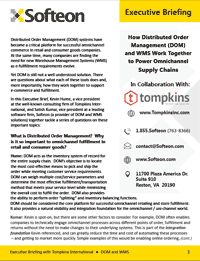A Materials Handling Roadmap 2.0, Part 1
In 2014, MHI (formerly the Material Handling Industry of America, an industry trade association), released what it called a "Roadmap for Materials Handling 2025."
That future-looking report was noteworthy for a couple of reasons, starting with it was really the first major initiative from MHI to expand beyond its traditional and primarily "four-wall" oriented roots to associate itself with broader supply chain themes and topics.
This transition, of which the change in the organization's name to just MHI is emblematic, has been accelerated greatly since George Prest took over as CEO in 2011, and has manifested itself in many ways, including: (1) partially successful efforts to make it's biannual MODEX tradeshow in Atlanta more of a supply chain, not just materials handling, event; (2) the dramatically revamped "annual report," which was transformed from a mostly "inside baseball review" of the materials handling marketplace to a supply chain thought leadership piece, co-authored for the last few years with Deloitte; and (3) attempts to transition its annual conference from a members-only event to a broader supply chain forum that would attract non-member practitioners - a effort that is still a work in progress.
| GILMORE SAYS: |
I will note the "tyranny of now" is a good way to describe the pressure that forces retailers to offer profit-crushing free shipping because everyone else does.
WHAT DO YOU SAY?
Send us your
Feedback here
|
As a side note, MHI's model is to offer membership at a company level - materials handling equipment and systems providers, software firms, some consultants - similar in that regard say to the National Retail Federation (NRF) - versus professional organizations such as CSCMP, WERC, and ISM, that are built on memberships at an individual level (even though most offer a form of corporate membership, but not in the same way).
This has many ramifications, which I may sort out one day.
The first Roadmap's mission was to "to assemble a broad community of thought leaders with a stake in the future of material handling and logistics technologies and practices to create an industry roadmap that will increase productivity, reduce costs, create jobs and improve the global competitiveness of the US," according to then senior vice president for professional development at MHI Gary Forger, who officially retired last year but was still involved in a new Roadmap released in April.
One of the catalysts for the initial MHI Roadmap effort was a similar effort from the Robotics Virtual Organization, which released a conceptually similar roadmap in early 2013 - an effort that led to some attention and support from the US Congress. MHI was hoping for similar success.
Key to the first Roadmap and this latest one were a series of four events in cities such as Atlanta and Chicago, in which roughly 50 supply chain professionals from materials handling vendors, consultants, users/shippers, academics and more were brought together for a couple of days to discuss relevant topics and themes and provide the key fodder for the end Roadmap. I participated in one of these meetings - which was interesting - for the first report, but decided for me personally it wasn't worth the time last year to attend one of these enclaves for the 2017 Roadmap.
The structure of "Material Handling & Logistics US Roadmap 2.0" is very different from the first version, for reasons not completely clear. The 2014 edition was largely oriented around a discussion of key supply chain disruptors (e.g., the growth of ecommerce; urbanization) and then a related set of core competencies that these changes demand companies embrace (e.g., collaboration, supply chain visibility).
The 2.0 Roadmap, by contract, is organized around four key mega-themes: technology, consumers, workforce issues, and infrastructure. Whether this was a smart change or not I will leave to part 2 of this review, but the overall theme running through the document is the incredible pace of change supply chain organizations and practitioners are facing.
"Unbelievable and surreal aptly describe our daily rate of change across the 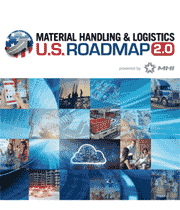 board," the new report notes, citing a long laundry list of developments just in the past few years that supply chains need to grapple with, from last mile delivery to the "gig" economy. board," the new report notes, citing a long laundry list of developments just in the past few years that supply chains need to grapple with, from last mile delivery to the "gig" economy.
In the report's introduction, it cites some interesting comments that came out of those four discussion group meetings I noted above. For example, mentioned is a discussion on how permanent a material handling system should be in a warehouse, with one participant suggesting that all equipment should be leased for five years and then replaced with an updated system.
"That doesn't happen today, but no one said the idea was a bad one. It could well be standard practice by 2030," the report says.
Another participant said "Warehousing has changed so much in the past 5 years that I have to be careful not to hire experienced people who do not recognize the shifts." That's very interesting indeed.
I am now going to summarize some of the highlights of the technology and consumer report themes in this column, then address the workforce and infrastructure sections in a part 2.
The pace of change in technology that directly or indirectly impacts the supply chain is extraordinary, as the report notes and most of us perceive clearly.
These change bring opportunities - and concerns.
Those concerns "range from ordinary security of data and physical items to causing massive unemployment by eliminating jobs to combinations of technologies that could be wrongly used to significantly damage humanity," the report notes.
This leads to interesting questions. The report, for example, says it is possible that artificial intelligence will make most human work obsolete. Is that good or not so good?
The report adds that "technology is most likely to be the strongest driver of change today and for the foreseeable future in the supply chain," in large part because it will have a profound impact on the other three themes of the Roadmap.
The report says that during the Roadmap 2.0 workshops, three trends dominated the technology discussions. (1) Increasing scope, deployment and sophistication of the integrated system of Cloud computing, connectivity, sensors and the Internet of Things; (2) Broad use of advanced artificial intelligence, particularly when deployed in the Cloud, will scale so resources can be applied to address problems with huge computing requirements; and (3) The rising importance of security and risk in both the physical and cyber domains as the availability and usage of data escalates.
That's a pretty good list, to which I would add the rise of robotics in the supply chain.
On the consumer theme, the report notes the buying habits of traditional consumers and business consumers are converging, and "It hasn't always been that way."
The report also notes that within its horizon to year 2030, so called Millennials will be already knocking on middle age. What will the coming wave, often called iGen or GenZ bring? No one has any real idea - they will both influence and be influenced by the environment.
The report indicates that traditionally, the business purchasing process took lots of time, working through purchasing managers, sales meetings, pricing negotiations, etc.. That process is changing at an increasing pace, to a more ecommerce orientation.
"This trend is in place but not yet universal by any means. It will be." the report notes.
Whether it's true consumer demand or consumers are being pushed there by Amazon and others, "The tyranny of now will only become more domineering, causing a relentless re-engineering of how material handling, logistics and the supply chain will work going forward," the report says.
I will note the "tyranny of now" is a good way to describe the pressure that forces retailers to offer profit-crushing free shipping because everyone else does.
The report says that there are five key questions for sellers that drive current consumer behavior, notably on-line: (1) Do they have what I want/need? (2) How much is it? (3) When can I get it? (4) How do I get it?; and (5) Do I trust you?
I will note that normally there would be an inverse relationship between how fast I can get it and how much it is going to cost, a relationship that Amazon is simply blowing up - for now at least.
There is much more I can and will say, but I am out of room. Look for part 2 soon. Full report can be found here: Material Handling & Logistics US Roadmap 2.0
What is your reaction to Gilmore's Part 1 summary of MHI's 2017 Roadmap? Let us know your thoughts at the Feedback button below.
|



![]()
![]()

![]()
![]()

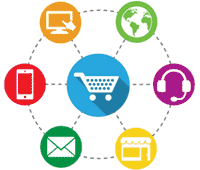
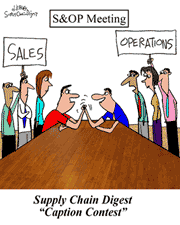
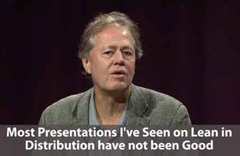

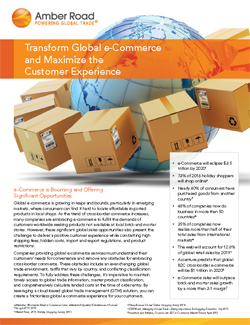


 board," the new report notes, citing a long laundry list of developments just in the past few years that supply chains need to grapple with, from last mile delivery to the "gig" economy.
board," the new report notes, citing a long laundry list of developments just in the past few years that supply chains need to grapple with, from last mile delivery to the "gig" economy.